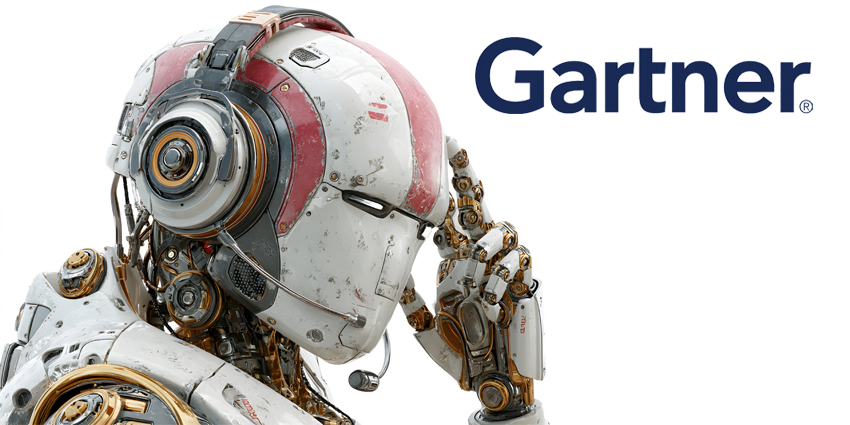Investing in an employee experience platform isn’t just a great way to retain staff members. Excellent employee experiences drive better customer interactions too. Consistently, studies show that happier employees contribute to better CSAT scores, reduced consumer turnover, and higher profits.
One Gallup report even found motivated staff members can increase profitability by 23%. Unfortunately, keeping team members happy and engaged isn’t always easy. Particularly in today’s age of hybrid and remote work.
That’s where your employee experience platform comes in, offering tools and software solutions to help improve employee satisfaction. Today, we’re going to define what an employee experience platform is, what it can do for your brand, and how you can choose the right solution.
What is an Employee Experience Platform?
An employee experience platform, or “employee experience software,” is a catch-all term for the digital solutions and apps that companies use to delight teams. These platforms give business leaders a birds-eye view of everything happening in their business to identify potential issues.
They also offer access to comprehensive analytical tools for monitoring employee engagement and performance. Plus, they can provide brands with a convenient way to connect with staff members wherever they are, delivering recognition, rewards, and feedback.
The Features of Employee Experience Platforms
While the features of an employee experience platform can vary, they often include:
- Communication tools: An employee experience platform may include tools that help agents in a contact center interact with supervisors, customers, and colleagues. Some solutions feature omnichannel ticketing systems to help consolidate agent workflows.
- Help desks: Helpdesk software provides agents with the resources to solve common technical problems and issues. They may include AI-driven bots, which help troubleshoot problems, and ways to reach out to a service team.
- Reward and recognition tools: Rewards platforms help companies deliver positive feedback to their teams for hard work. They can include point systems, leaderboards for gamification, and various “bonus” options for team members.
- Workflows: Automated workflows help minimize specific tasks’ complexity, like managing schedules or requesting PTO. This helps to improve consistency and simplifies the work experience for team members.
- Reporting and analytics: Analytical tools offer data-driven insights into employee performance, engagement, and KPIs. These help business leaders make intelligent decisions about how to improve staff satisfaction.
Many modern platforms also support integrations with various tools and apps, such as scheduling tools, workforce optimization apps, and collaboration tools like Microsoft Teams.
The Benefits of an Employee Experience Platform
As mentioned above, a reliable employee experience platform does a lot more than just boost team satisfaction scores. In the contact center, your employee experience tools can drive incredible results, including:
- Greater employee retention: Holding onto top talent isn’t easy in the contact center. An employee experience platform boosts staff loyalty by creating a positive and engaging work environment. It paves the way for long-standing relationships with team members.
- Better collaboration: Working from a centralized platform helps agents and team members from different departments collaborate more effectively. Greater cooperation leads to more efficient work and a more robust company culture.
- Enhanced productivity: Happy and engaged employees are productive employees. Employee experience software can even help assign responsibilities, facilitate conversations between teams, and keep workflows on track.
- Reduced operating costs: Higher productivity means lower operating costs. Some employee experience platforms can leverage AI and automation to minimize repetitive tasks. Plus, self-service portals reduce the need to hire extra help desk operators.
- Happier customers: Employee experience has a direct impact on customer experience. The right software empowers employees to accomplish more, deliver personalized interactions, and drive up CSAT scores.
The Top Employee Experience Platform: X Options
While there’s no one-size-fits-all strategy to choosing the best employee experience platform, there are plenty of great options out there. Based on our market analysis, here are some of the most reputable software solutions available to businesses today.
1. Oracle Me
Introduced by a world leader in technology and cloud solutions, the Oracle ME platform combines artificial intelligence, workflow tools, and employee feedback. This comprehensive employee experience platform leverages sentiment scores, communication tools for personalized interactions, and even automated workflow tools.
Plus, it provides agents throughout the contact center easy access to the solutions they need to resolve common problems. There’s even an HR chatbot for rapid self-service, a powerful helpdesk, and more. Key features include:
- A comprehensive workforce directory (Oracle Connections) for collaboration
- Workflow automation with extensive personalization features
- End-to-end communication tools with insights into engagement metrics
- AI tools for monitoring and acting on sentiment scores
- Digital assistant and helpdesk tools for easy problem resolution
2. Zendesk
Zendesk’s internal helpdesk tools provide businesses of all sizes with the resources they need to build their employee experience platform. The solution features automation tools for HR and IT activities, workforce directories, and in-depth analytics into support trends.
Additionally, the highly customizable platform allows companies to tailor their workspace to specific needs. You can create your workflows without coding knowledge and create different environments for various staff members.
Zendesk even offers a host of intelligent AI bots to minimize repetitive tasks, provide quick answers to team problems, and more. Features include:
- Omnichannel ticketing system for the helpdesk
- AI-powered self-service chatbots and knowledgebases
- Workflows with customizable automation
- Reporting and analytics with real-time dashboards
- Intelligent ticket routing tools
- Live chat support for distributed teams
3. Alight Worklife
Alight Worklife, designed for multinational organizations, aligns payroll management with employee engagement tools. The system connects the dots between countless countries, unifying payroll into one place for convenient management. It can also integrate with your talent, benefits, and HCM platforms, synchronizing real-time information.
To boost employee engagement and satisfaction, Alight offers a range of self-service tools for employee support. Plus, AI chatbots and tools are built into the ecosystem to help answer team questions instantly. Core features include:
- Rich data insights and analytics
- Intuitive end-to-end payroll management
- Self-service tools for payroll and HR requirements
- Dedicated dashboards for every team member
- Real-time support powered by AI
4. Lattice
Leader in HR technology, Lattice is dedicated to helping every business create a happier workforce. The Lattice platform supports one-on-one meetings, comprehensive feedback, employee recognition, and compensation analysis.
With this tool, business leaders can create surveys to track satisfaction and loyalty scores and onboarding and exit feedback. Plus, the platform can unify teams with transparent goals and OKRs. There’s even the option to build development solutions into the system for learning and succession planning.
Furthermore, Lattice integrates with various tools, from Outlook to Microsoft Teams, Slack, and Salesforce. Key features include:
- End-to-end performance tracking and analytics
- Customizable reports and real-time dashboards
- Surveys for tracking employee engagement
- Career advancement platform
- Compensation analysis and management tools
5. Microsoft Viva
One of the most popular employee experience platform options today, Microsoft Viva, is a powerful tool for business leaders. The solution consists of various AI-powered tools, automation, and powerful insights. Companies can use Viva Connections to communicate and engage with team members. There’s Viva Insights for collecting feedback and Viva Glint for survey management.
Microsoft’s tools also come with valuable solutions for unifying teams around the same organizational goals. You can even use Viva to create complete learning directories for team members and provide staff members with access to curated content.
Viva also works well with the rest of the Microsoft landscape, offering integrations for tools like Teams and Outlook. Key features include:
- Employee communication tools for comprehensive collaboration
- Goal-setting solutions for tracking OKRs
- Learning and knowledgebase resources
- Surveys and in-depth analytics for employee engagement
- Role-based solutions like Viva Sales
6. Qualtrics EmployeeXM
Constantly evolving with new features, like generative AI capabilities, the Qualtrics EmployeeXM solution is ideal for evolving brands. This employee experience platform helps companies dive deeper into customer and team sentiment for enhanced “total experience.”
Business leaders can consistently survey employee groups, monitor trends, and identify potential issues fast. Plus, fantastic dashboards and planning tools offer a complete view of user engagement levels.
Predictive intelligence features can even leverage historical information to help you stay one step ahead of potential problems in your ecosystem. Key features include:
- Unified customer and employee insights
- Purpose-built dashboards for business leaders
- Enterprise-grade data protection and security
- Diversity, equity, and inclusion tools
- ENPS software with survey creation
- Candidate experience tools
7. Workday
Workday offers an employee experience platform designed to accelerate team success and digital transformation. The platform includes embedded artificial intelligence, adaptive planning tools, and applications for finance, HR, and IT teams.
Workday’s unique listening technology helps to drive deeper insights into staff satisfaction through two-way conversations. Plus, the all-in-one platform also supports enterprise resource planning solutions. This ensures companies can overcome rigid processes and pave the way for growth. Features include:
- Multi-lingual employee experience surveys
- Automated scheduling, delivery, and analysis tools
- In-depth engagement dashboards for every employee
- Customizable KPI reports for insights into ROI
- Training solutions for managers and leaders
8. Culture Amp
Another market-leading employee experience platform, Culture Amp, is a data-driven tool for workplace transformation. This powerful toolkit has powerful insights, ready-to-use survey templates, and retention reports.
Plus, it also offers access to goal-tracking capabilities, employee development plans, and integrations for tools like Slack and Microsoft Teams. With Culture Amp, companies can dive into data analytics and behavioral science to find unique ways of improving satisfaction.
You can even use the tool to track which of your employees are “top performers.” Key features include:
- Multi-source feedback options with survey templates
- Goal tracking and analytics
- Visual retention and engagement insights
- Integrations with leading collaboration tools
- Automated workflows for team efficiency
9. Fond
Ideal for boosting your employee reward and recognition plan, Fond is an employee experience platform designed in collaboration with Reward Gateway. The company provides many tools to help companies manage and improve the employee experience.
With this solution, business leaders can publicly acknowledge their teams’ accomplishments, provide access to service rewards, and leverage in-depth performance analytics. Plus, you can access a host of pre-negotiated perks for your team members. Key features include:
- In-depth reporting and analytics
- Social recognition tools for public feedback
- Service rewards and pre-negotiated perks
- Integrations with collaboration tools
- Easy-to-use and seamless backend
10. Zoho Desk
Service desk and employee experience platform in one Zoho Desk is brimming with helpful features. The comprehensive toolkit includes a web and mobile app, workflow automation, and insights into process bottlenecks. It integrates with tools like Trello, Slack, and Microsoft Teams and has its own API for custom connections.
Plus, the solution makes it easy to deliver self-service support to agents with AI bots, user communities, and knowledgebases. There’s even an AI tool to help triage support tickets and provide insights into employee sentiment.
Zoho Desk offers a range of agent scorecards for quality management and end-to-end omnichannel solutions for collaboration. Key features include:
- Customizable agent scorecards and report
- AI-powered self-service chatbots and knowledgebases
- Automated workflows for all kinds of teams
- Comprehensive integrations with a range of apps
- Intelligent routing for support tickets
- In-depth insights into employee sentiment and experience
Choosing the Right Employee Experience Platform
Used correctly, the right employee experience platform can significantly improve the performance of your business and your CX strategy. The question is, how do you choose the right solution? Some of the key points we recommend keeping in mind include:
- Features: The best employee experience tool should be a feature-rich and innovative solution. The features that matter most to you may vary depending on your business. However, it’s worth looking for rewards tools, analytics, and AI integrations.
- Ease of use: The easier your employee experience platform is, the quicker your time to value will be. Ensure you choose a straightforward, convenient solution with a clean user interface and plenty of customer support options.
- Scalability: As your business evolves, your experience platform needs to evolve with it. Make sure you can manage a wide range of employees, from remote and distributed workers to in-office IT professionals, in one place.
- Total cost of ownership: Don’t just focus on the software price. Think about the total cost of ownership for add-ons, coding, maintenance, and staffing requirements. Don’t forget to consider the potential ROI of your platform too.
Use the tips above, and you’ll choose an employee experience platform that helps your business (and team) thrive in the modern world.
FAQ:
What is an employee experience platform?
Employee experience platforms apply HR solutions, AI, and technology to your workflows to improve team satisfaction. They improve communication, enhance productivity and engagement, and transform company culture.
What is the purpose of employee experience?
Investing in employee experience doesn’t just improve company culture. It can increase productivity and efficiency, reduce staff turnover, and improve customer experiences. It can also help businesses to attract the right talent to their teams.
Is employee experience the same as HR?
Employee experience is essentially the HR version of customer experience. However, building a compelling employee experience is about more than just HR. To thrive, the happiest agents need access to the right tools, recognition, and development resources.







